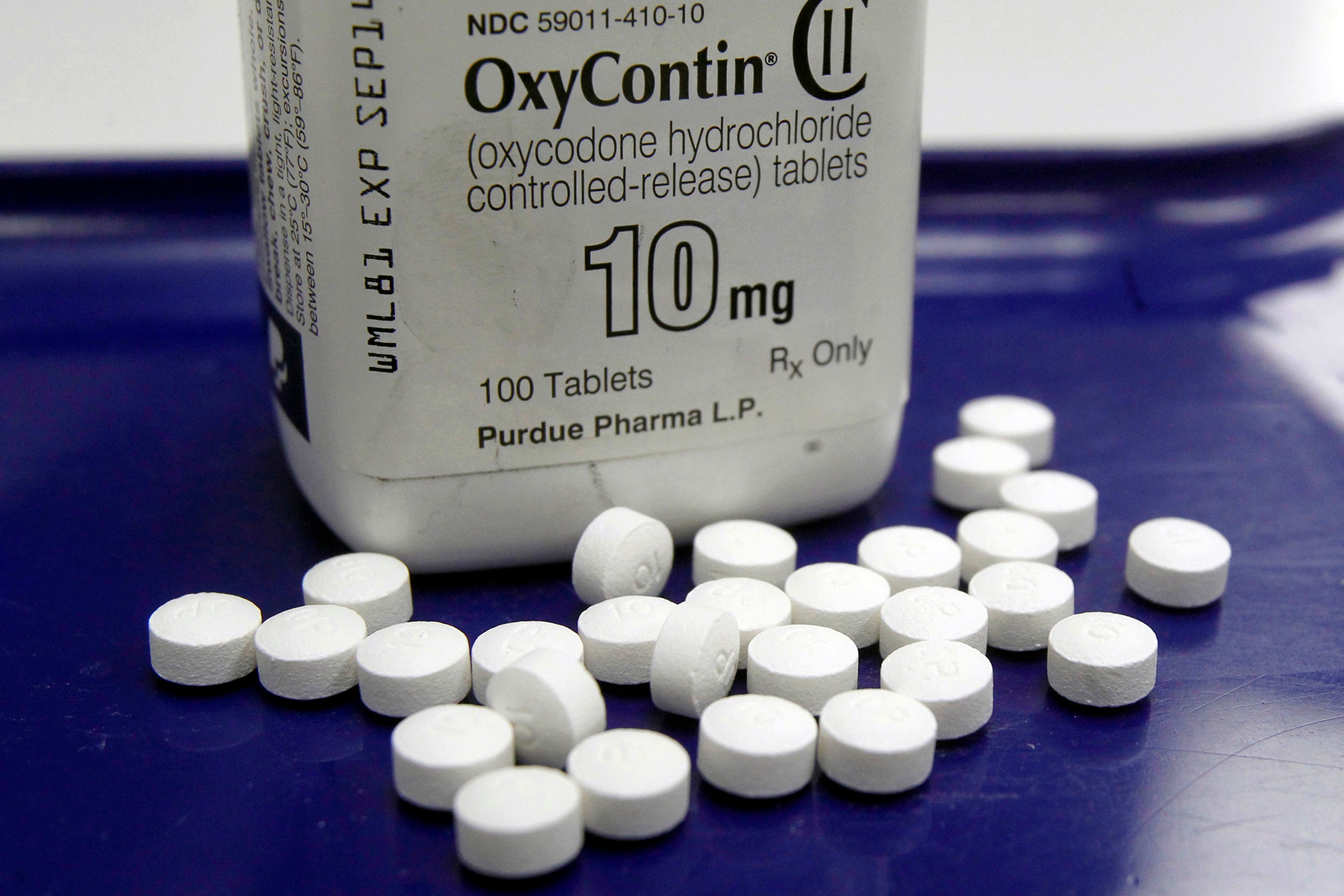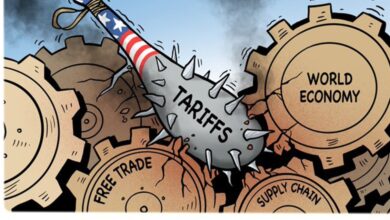McKinsey & Co Settles for $78 Million in Landmark Opioid Epidemic Case; The Growing Fentanyl And The U.S. Opioid Epidemic.
In a groundbreaking resolution, consulting giant McKinsey & Co has agreed to pay $78 million to settle claims made by U.S. health insurers and benefit plans, bringing an end to a series of lawsuits tied to the devastating opioid epidemic. The settlement, disclosed in federal court documents filed on Friday in San Francisco, marks a significant chapter in the legal battles surrounding McKinsey's alleged role in fueling the opioid crisis through its collaboration with drug companies, including Purdue Pharma, the maker of OxyContin. Accusations against McKinsey include aiding in the design of deceptive marketing plans and contributing to the proliferation of addictive painkillers. This settlement is the latest in a series, with McKinsey having previously paid substantial amounts to state attorneys general, local governments, and Native American tribes. As the consulting firm denies wrongdoing, this development spotlights the ongoing efforts to hold key players accountable in a crisis that has claimed the lives of hundreds of thousands of Americans. McKinsey & Co, a prominent consulting firm, has agree

McKinsey & Co, has agreed to pay $78 million to settle allegations from U.S. health insurers and benefit plans that it played a role in the opioid epidemic by supporting drug companies, including Purdue Pharma, the manufacturer of OxyContin.
The settlement, revealed in documents filed on Friday in a San Francisco federal court, is the final resolution in a series of settlements addressing lawsuits against McKinsey related to the U.S. opioid crisis.
Plaintiffs accused McKinsey, a global consulting leader, of contributing to the deadly drug crisis by assisting drug manufacturers, such as Purdue Pharma, in devising deceptive marketing strategies to increase the sales of painkillers.

McKinsey had previously paid $641.5 million to settle claims by state attorneys general and an additional $230 million to resolve cases brought by local governments. The firm had also settled with Native American tribes.
The recently announced class action settlement, subject to judicial approval, addresses claims by third-party payers like insurers responsible for providing health and welfare benefits.
According to Paul Geller, a lawyer for the plaintiffs, the lawsuit aimed to recover funds spent on over-prescribed pills due to the drug crisis caused by an oversupply of dangerous addictive drugs.
While McKinsey did not admit wrongdoing, it stated in a release that it maintained its belief in the legality of its past work and emphasized that it had ceased advising clients on any opioid-related business in 2019.
The opioid epidemic has led to thousands of lawsuits filed by states, local governments, and Native American tribes against drug companies, alleging downplaying of opioid risks and negligence by distributors and pharmacies in recognizing illegal trafficking indicators.
The ongoing litigation has resulted in settlements exceeding $50 billion with drugmakers, distributors, and pharmacy chains.
Over the period from 1999 to 2021, nearly 645,000 individuals in the United States lost their lives to opioid-related overdoses, including both prescription and illicit opioids, as reported by the U.S. Centers for Disease Control and Prevention.
In a separate development, earlier this month, the U.S. Supreme Court heard a challenge by President Joe Biden’s administration to Purdue Pharma’s multi-billion-dollar bankruptcy settlement, addressing related claims against the drugmaker.
Fentanyl And The U.S. Opioid Epidemic
The United States is grappling with the most severe drug crisis in its history, and at the heart of this epidemic is the pervasive influence of opioids.
With more than 1,500 Americans succumbing to opioid-related fatalities every week, these substances have become the leading cause of deadly overdoses in the country.
While the crisis originated in the overprescription of legal pain medications in the 1990s, it has since evolved into a multifaceted challenge fueled by the influx of cheap heroin, fentanyl, and other synthetic opioids, often supplied by foreign drug cartels.
Notably, illicit fentanyl, an exceptionally lethal synthetic opioid, has emerged as a defining and alarming aspect of this ongoing public health crisis, with clandestine production hubs primarily located in China and Mexico.
Opioid medications, such as oxycodone, hydrocodone, morphine, and fentanyl, are prescribed for severe pain management, with methadone predominantly utilized in addiction treatment centers.
The opioid epidemic, characterized by distinct waves, saw the rise of overdose deaths from prescription medications in the 1990s, followed by a surge in illegal heroin use in the early 2010s. More recently, synthetic opioids, particularly fentanyl, have driven a sharp increase in overdose fatalities since around 2013.
Originally introduced for legal medical use in the 1960s, fentanyl has taken a perilous turn as its illegal production and distribution pose an extraordinary threat to public health.

Anne Milgram, the head of the U.S. Drug Enforcement Administration (DEA), has declared fentanyl the “single deadliest drug threat our nation has ever encountered.”
Complicating matters further, new combinations of synthetic opioids, including potent substances like Xylazine used in horse tranquilizers, continue to emerge, contributing to the complexity of the crisis.
Magnitude, Demographics, and Economic Fallout
The opioid epidemic in the United States has reached unprecedented proportions, with synthetic opioids, particularly fentanyl, standing as the leading cause of deaths among individuals aged eighteen to forty-five.
The scale of this crisis is staggering, as reflected in the 2021 death toll of 80,411—a figure surpassing the combined losses of U.S. military service members in the post-9/11 wars in Iraq and Afghanistan.
The surge represents a tripling of deaths from fentanyl alone between 2016 and 2021, as reported by a joint study from the Mayo Clinic and Yale University.
Compounded by the challenges brought about by the COVID-19 pandemic, disruptions in supply chains and social-distancing measures have exacerbated the epidemic.
The pandemic has driven individuals to experiment with unfamiliar drugs, often resulting in solitary usage and an increased risk of fatal overdoses. Together, the proliferation of illicit fentanyl, cleverly disguised as legal prescription opioids by drug cartels, has added complexity to the crisis.
In 2022, the Drug Enforcement Administration (DEA) seized over fifty million fentanyl-laced fake prescription pills, signaling a significant escalation from the previous year.

Fentanyl’s extreme potency, with a lethal dose requiring only two milligrams, equivalent to ten to fifteen grains of table salt, intensifies its addictive and deadly nature.
Disturbingly, American Indian and Alaska Native populations, Black individuals, younger adults, and men experience fentanyl-linked overdoses at higher rates.
Equally concerning is the doubling of fatal fentanyl overdoses in youths aged ten to nineteen, attributed partly to the ease of procuring counterfeit pills through social media.
Moreover, research reveals that specific demographic groups, including military veterans, people with disabilities, the bereaved, renters, and the uninsured, bear disproportionate harm from opioids.
Beyond the human toll, the economic consequences of the opioid epidemic are substantial, as highlighted by estimates suggesting a cost of nearly $1.5 trillion in 2020—equivalent to 7 percent of the gross domestic product (GDP).
This economic burden encompasses healthcare expenses, efforts to combat fentanyl trafficking, criminal justice endeavors, lost workforce productivity, and the profound costs associated with lives lost to overdose and the diminished value of life for survivors.
The Global Supply Chain, U.S. Efforts, and Innovative Solutions
Supply Routes and Culprits
U.S. officials identify Mexico as the primary route for smuggling most fentanyl into the country, emphasizing the ease with which small, potent amounts can be concealed by traffickers.
While China was once the dominant source of fentanyl, its role has diminished since a 2019 ban on fentanyl variants. However, China remains a major supplier of precursor chemicals used in fentanyl production, contributing to the ongoing crisis.
Cartels and Traffickers
Mexican drug cartels, particularly the Sinaloa Cartel and the Jalisco New Generation Cartel, have become leaders in fentanyl production and distribution.
Disturbingly, a significant portion of fentanyl traffickers crossing the border are American citizens, highlighting the complexity of the crisis. Recent signals from the Sinaloa Cartel about reducing involvement in fentanyl trafficking pose a potential shift, but the authenticity and impact remain uncertain.

U.S. Response
The U.S. government, cognizant of the escalating crisis, has engaged in extensive collaborations, notably through the Mérida Initiative, providing billions in aid to Mexico for counternarcotics efforts.
President Joe Biden has declared synthetic-opioid trafficking a national emergency, imposing sanctions on entities associated with fentanyl production. Recent sanctions on Chinese firms involved in fentanyl precursor chemicals underscore U.S. efforts to curb the crisis globally.
International Cooperation
Biden’s administration has maintained pressure on Mexico to intercept precursors and combat clandestine labs, securing agreements with Chinese President Xi Jinping and Mexican President López Obrador to enhance bilateral cooperation.
However, challenges persist, as Mexico resists extensive collaboration with the United States on the issue.

Domestic Strategies
Internally, the Biden administration has introduced stringent regulations on opioid prescriptions, doubled efforts to seize fentanyl, and issued public alerts about fake prescription drugs.
The Food and Drug Administration’s approval of Narcan as an over-the-counter drug represents a critical step in reversing fentanyl overdoses, though challenges related to cost and accessibility persist.
Innovative Approaches
To address the multifaceted crisis, experts advocate for enhanced research and development, alternative interventions such as supervised consumption sites, improved disruption of online transactions, intensified border inspections, and robust overdose-prevention and employee-assistance programs.
As the United States grapples with the far-reaching consequences of the opioid epidemic, a comprehensive and collaborative approach becomes imperative to mitigate the devastating impact on individuals, communities, and the nation at large.





